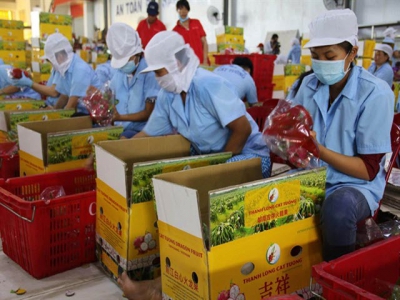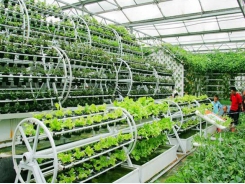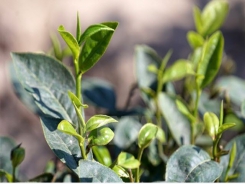Farm produce exports to China face higher quality standards

Dragon fruit is processed at Cát Tường Agricultural Processing And Production Company Limited in the southern province of Tiền Giang’s Mỹ Tho City. — VNA/VNS Photo Minh Trí
LẠNG SƠN — Việt Nam’s agricultural and aquatic exports to China are likely to face higher quality requirements and stronger competition from other ASEAN exporters although China’s demand for these goods is still on the rise, heard a meeting on Saturday.
The event was held by the Ministry of Agriculture and Rural Development and the People’s Committee of the northern province of Lạng Sơn.
The aim was to connect farm produce sellers and buyers of Vietnamese and Chinese border provinces.
Statistics show trade between the two countries has increased hitting US$93.7 billion in 2017, up 30.2 per cent year on year.
It reached $46.8 billion in the first half of 2018, up 17.4 per cent from the same period last year. The figure included $3.7 billion worth of Vietnamese agricultural and aquatic exports to China, rising by 6.4 per cent.
Participants in the meeting shared the view that Việt Nam has many favourable conditions for farm produce trading with its neighbour, which has a great need for these commodities.
Similar consumer taste and the close proximity helps facilitate the transportation of goods, especially seasonal produce and items benefiting from preferential tariffs under the ASEAN-China Free Trade Agreement and other international commitments of China.
However, La Đình Tuyến from the Export-Import Department of the Ministry of Industry and Trade said Vietnamese goods in China are encountering competition from similar products of Thailand, Indonesia, India, Cambodia and even China itself.
There are also a number of products that China will not allow to be imported, such as mangosteen, durian, passion fruit, live pigs, milk products, freshwater fish and clam.
Besides, Tuyến said some border provinces and trading companies haven’t developed infrastructure strong enough.
He noted China has set higher quality standards, adding that it has built large-scale testing and quarantine laboratories comparable to those of developed nations like the US, Japan and EU countries.
To enter China, agricultural and aquatic products of Việt Nam face higher quality barriers and stronger competition from other ASEAN countries, he said.
Echoing this, Nguyễn Thị Hà, head of the Plant Quarantine Sub-department of Region 7 (consisting of Lạng Sơn and some nearby provinces), said China is raising plant quarantine barriers and has issued stricter regulations on farm produce imports.
To maintain Vietnamese goods’ prestige, businesses need to seriously adhere to Chinese regulations on products’ origin and coordinate with plant quarantine units in taking samples of farm produce for testing.
Meanwhile, the agriculture ministry’s Plant Protection Department will work more closely with the Chinese side to gradually remove technical barriers to Vietnamese agricultural products. It will also continue asking China to permit the official import of more fresh fruits from the country, Hà said.
At the meeting, Vietnamese and Chinese businesses signed many memoranda of understanding on farm produce trading co-operation.
Có thể bạn quan tâm
Phần mềm

Phối trộn thức ăn chăn nuôi

Pha dung dịch thủy canh

Định mức cho tôm ăn

Phối trộn phân bón NPK

Xác định tỷ lệ tôm sống

Chuyển đổi đơn vị phân bón

Xác định công suất sục khí

Chuyển đổi đơn vị tôm

Tính diện tích nhà kính

Tính thể tích ao hồ



 Hung Yen longan farmers see bumper crop at…
Hung Yen longan farmers see bumper crop at…  Enhancing added value for Vietnamese agricultural products
Enhancing added value for Vietnamese agricultural products